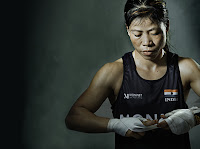The 20th Asian Athletics Championship kicked off on July 3
at the Shiv Chhattrapati stadium, Balewadi and will continue till July 7. The
event was inaugurated by Maharatra Chief Minister Prithviraj Chavan along with
other officials present during the opening ceremony in Pune. Artists performed Koli dance and
children performed Mallakhamb during the opening ceremony.
 |
| President of the AFI, Adille J Sumariwalla |
In an interview with SIMC Wire, the President of the
Athletics Federation of India (AFI), Adille J Sumariwalla has claimed that the
allotted venue at Pune is the best choice for the games, even though Chennai,
Jharkhand and New Delhi were potential place to host the games.
“We did not choose Shiv Chhattrapati Stadium, Balewadi for
the games. We had actually planned Jhark
hand, which is a new stadium with
better infrastructure for the games. However, due to Naxalism prevailing in
Jharkhand and nearby areas, the Government decided to push the venue to Delhi
but the capital’s answer was no. So, we finally resorted to Pune as the venue,
when we requested the honourable chief minister of Maharshtra, PrithviRaj
Chauhan, who gave the nod for the games to commence,” said Sumariwalla.
With over 577 athletes from 43 countries excepting Bhutan
and Myanmar in the fight, the championship is already on the record books as
the biggest Asian meet ever and the winners of the various events will be
directly entering into the World championships to be held in Moscow next month.
The AFI President said, “It was a tough job because
something like this takes nearly two years in terms of preparation and we were
given something like three weeks. However, due to the unprecedented support of
the government of Maharashtra and the aide from the chief minister and the
sports minister, we were able to pull this off.”
“Particularly, the additional chief secretary was posted
here in Pune, the divisional-commissioner along with Municipal commissioner of
Pune, Pimpri and Chinchwad, Water department were also present in full support
for any requirement for the Athletics Federation of India. Be it up-gradation
of the stadium or the accommodation of the players, the authorities supported
us in full swing and as you can see the games have begun,” added Sumariwalla.
Due to only being provided with a little more than 21 days
for the athletic meet to commence, an array of problems was posed before the
federation. Sumariwalla expressed
the difficulties as the tournament begun, “We faced tremendous amount of
challenges for the games, and there was transport, accommodation, security,
food, technical, accreditation, visas and various other challenges. I can
safely say after all the effort put in the last three weeks; we are practically
the best venue in the world to host these games. This system can run the
Olympic games.”
 |
| Shiv Chhatrapati Balewadi Stadium, Pune |
SIMC Wire discovered during the proceedings of the event
that there was no specific security check at the entry gates of the stadium.
Neither were there any metal detectors in place to check the bags of fans,
media persons and people within the sports complex.
When Wire enquired about the same from the Federations
President, he said, “There are absolutely no problems with regard to security,
the Mahrashtra police is on constant standby throughout the five day period of
the tournament. The Ministry of Home Affairs, New Delhi, is also in the loop.
There is special security for the players while they are travelling, outside
their hotels. So security is not a concern.”
India began their campaign at the 20th Asian Athletics
Championships on a mixed note on a rain-marred opening day in Pune on Wednesday.
“The rains will not pose any threat to the games. The tracks are all weather
synthetic, so, rain or no rain, the games will go on,” said Sumariwalla.
He also added, “I hope the athletes have the fairest and
fiercest competition through the tournament.”
Shot putter Om Prakash Karhana and long jumper Mayookha
Johny won a bronze each at the opening day for India. Om Prakash hurled
the iron ball to a distance of 19.45 in his second attempt, his season's best
though it was way less than his national record of 20.09m, to give India the
first medal of the Championships. Mayookha bagged a bronze in long jump after
the event was stopped mid-way due to rain only to resume later.









